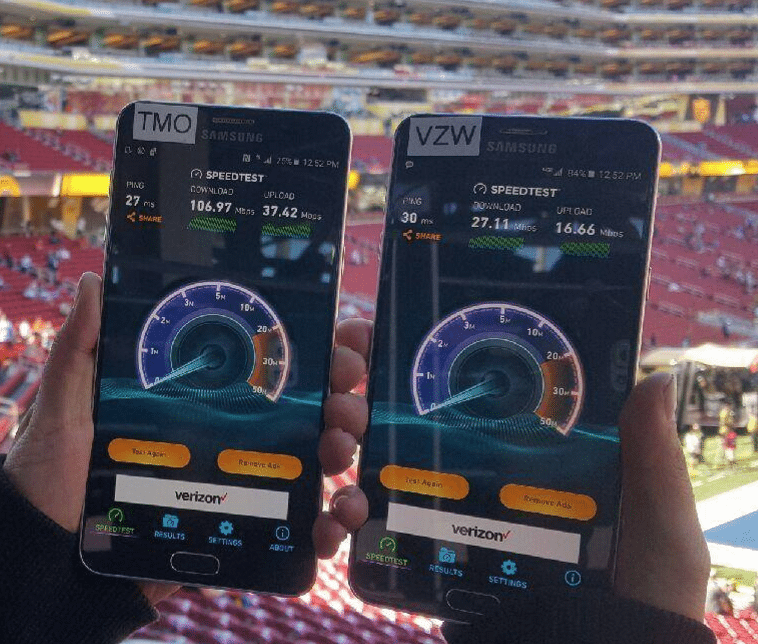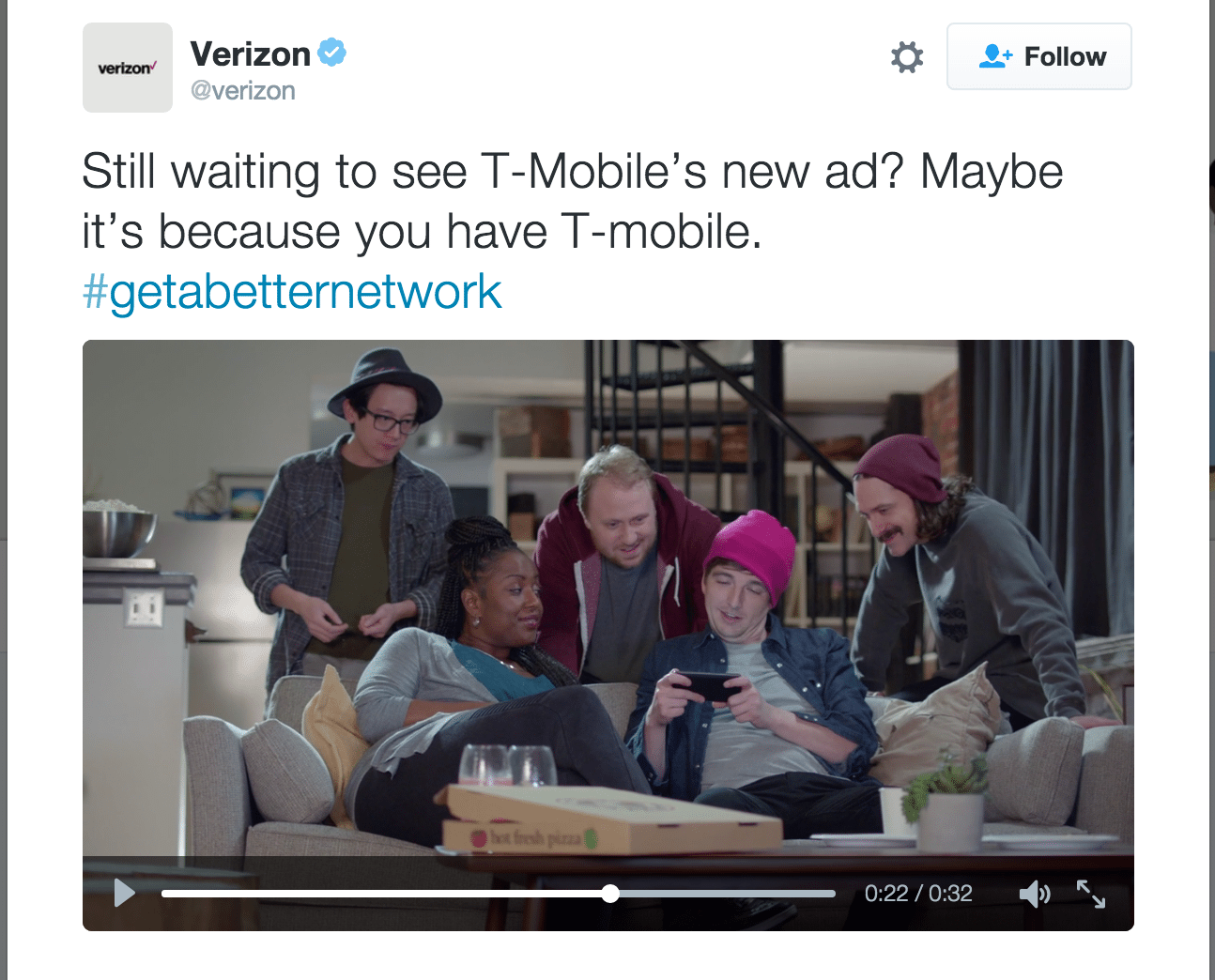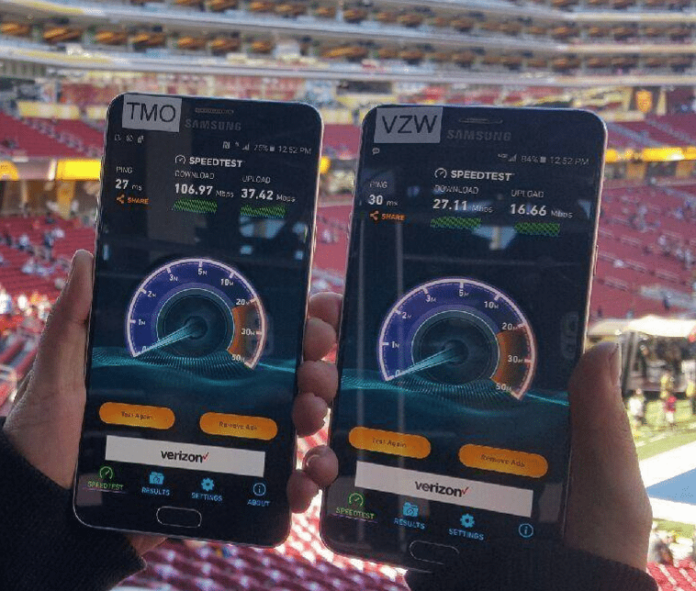Super Bowl 50 ended with Peyton Manning adding an unexpected win to his career, but for network watchers, the real battle played out between rival mobile carriers Verizon Wireless and T-Mobile US.
The Super Bowl and other big-time events draw major investment from wireless players. Verizon dropped around $70 million on network upgrades ranging from temporary cell sites, to small cell deployments to DAS upgrades. T-Mobile US added capacity at 150 cell sites around the 32 venues hosting activities related to the event, including local airports and hotels. The carrier also said it upgraded its distributed antenna system at Levi’s Stadium “to provide more than twice the LTE capacity than last year, and more reliable coverage in high traffic areas from lower bowl to the upper bowl and throughout the concourses.”
The so-called Un-carrier’s colorful CEO John Legere took to Facebook to take a jab at Verizon. In a photo with two handsets, one labelled, “TMO,” the other labelled “VZW,” Legere claimed T-Mobile’s network was pushing about 107 Mbps downlink speed, while Verizon came in at just more than 27 Mbps.
The picture came with the caption, “Looks like Verizon spent that $70M to come in second at the Super Bowl.”

But that’s just the tip of the iceberg. You’ll recall a recent Verizon ad campaign that visualizes network capacity by showing different colored balls, representing the four major U.S. carriers, rolling down inclined planes. Verizon uses the visualization to make the point that its network offers more capacity, based on independent tests, than all of its rivals, particularly T-Mobile.
In a 30-second spot aired during the Super Bowl, T-Mobile repeats the Verizon visualization with comedian Steve Harvey, recently in the news for naming the wrong woman as winner of the Miss Universe contest, which prompted him to make a media circuit apologizing, walking into the shot.
“I have to apologize. Again,” Harvey says. “Those were last year’s numbers,” he says, referencing Verizon’s network metrics touted in its ad. “T-Mobile doubled their LTE coverage in the last year. And with more LTE towers than Verizon, T-Mobile reaches pretty much everyone they [Verizon] do.” An exasperated Harvey throws up his hands: “I’m not taking responsibility on this one. Verizon got it wrong. Yes! It’s not me.”
https://youtu.be/eI8YZdejPKg
It didn’t end there. Verizon took to its company Twitter account to respond to the T-Mobile ad. “Still waiting to see T-Mobile’s new ad? Maybe it’s because you have T-Mobile. #getabetternetwork”
That tongue-in-cheek quip is accompanied by a video of a group of people watching TV with one young man–wearing a magenta beanie–gathering his companions around his phone to watch the new T-Mobile ad. As everyone looks on, “Hold on, it’s loading,” he says. The disappointment and silence lingers. “It just, uh, takes a second.” From there a voice over kicks in, you get the idea.


